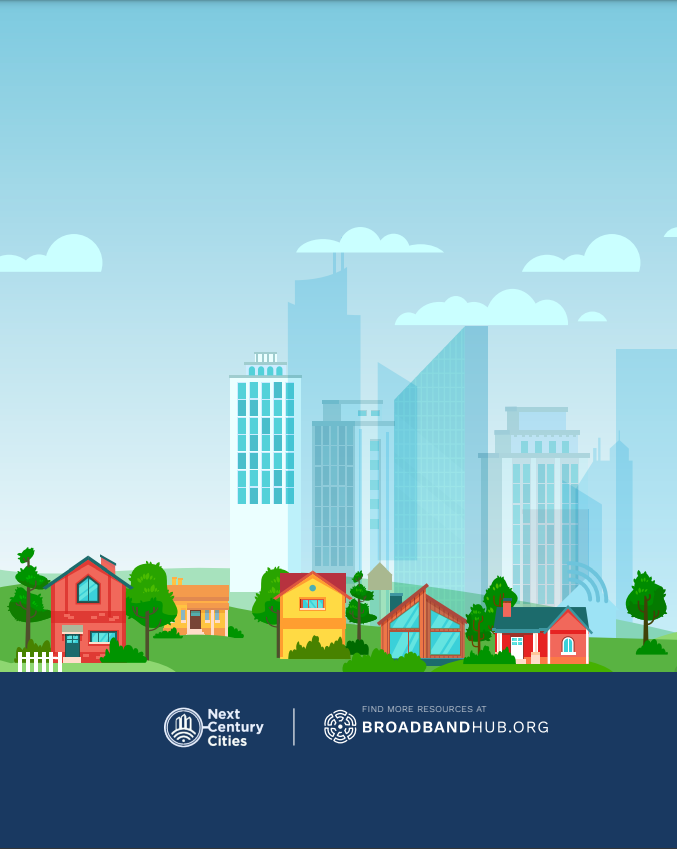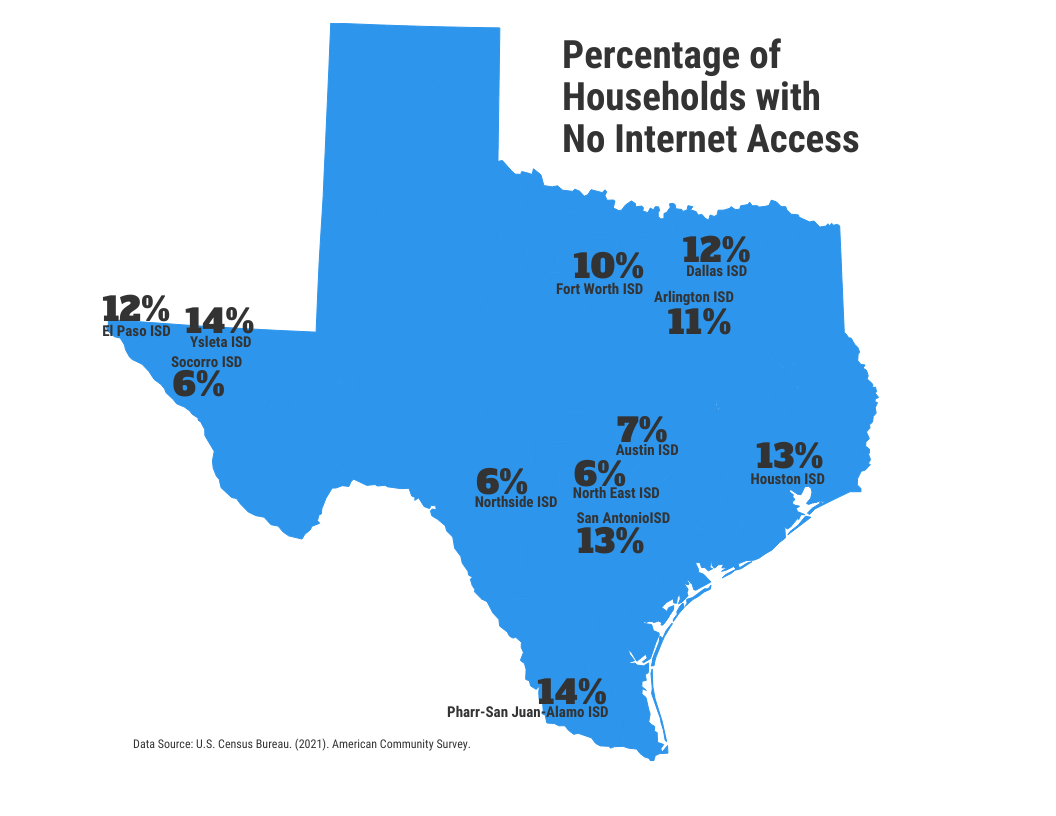BROADBAND MAKES US BETTER: LESSONS FROM THE LONE STAR STATE
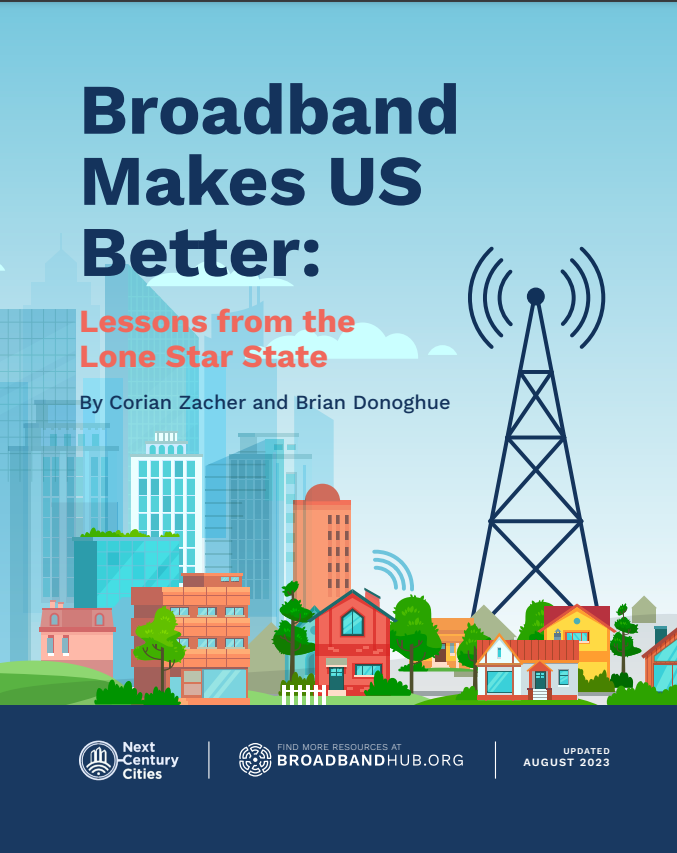
EXECUTIVE SUMMARY
From being a social determinant of health to impacting generational economic mobility, broadband connectivity now touches every aspect of American society. At a time when local leaders have never been more focused on expanding broadband access and adoption, efforts across the second-largest state in the U.S. the widespread need for a holistic approach to broadband policy has never been clearer.
In Texas, many communities have leveraged creative financing methods for assessing and installing broadband in their communities. If effectively deployed, incoming federal and state broadband funding will create opportunities to bridge longstanding access gaps for low-income and rural communities.
This paper reviews the recent history of local efforts to expand broadband access and adoption and explores the solid start for state and local coordination in Texas through the newly-formed Broadband Development Office. Additionally, it showcases why community-level broadband policies are imperative for ensuring that county, state, and federal programs provide maximum impact to residents facing connectivity barriers. Finally, with upcoming federal broadband funding opportunities filtering through states, the analysis explains why coordination with local governments has never been more important.
Table of Contents
IMPROVING BROADBAND ACCESS AND ADOPTION IS A CROSS-SECTOR EFFORT.
Long before the pandemic, Internet access became central to everything we do, particularly for having a meaningful voice in American society. The role that technology access and adoption plays in maintaining livelihood throughout national emergencies has also shifted. People working in healthcare, law, and education, to name a few, have gained a new appreciation for broadband’s central role in advancing a just and equitable society.
Efforts across the second-largest state in the U.S. illustrate the widespread need for a holistic approach to broadband policy. For too long, human and technical systems have excluded large swaths of the people who use them. Because technology reflects the people who build it and STEM education systematically excludes women and racial minorities, the majority of users’ needs are not reflected in the design process, warranting policies that intentionally counter decades of exclusion.
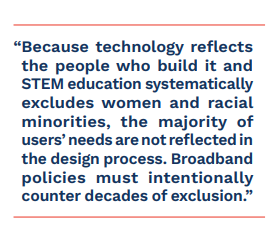
With a monumental amount of funding invested in broadband access and adoption, we have the unique opportunity to build new systems with users’ needs and experiences at the core. Local governments are situated in close physical and relational proximity to the people who continually face barriers to adopting affordable, high-quality broadband service. Accordingly, achieving state and federal broadband program objectives rely heavily on local implementation.
By empowering local leaders with the resources necessary to meet residents’ needs, federal and state policymakers can design programs that grow on-the-ground efforts. Fundamentally, investing in community-based programs and expertise helps build a legacy of inclusion into the broadband networks of tomorrow.
Though hospitals began using telehealth in the 1950s and 60s, the pandemic thrust virtual healthcare into the mainstream. FAIR Health found that between March 2019 and March 2020, the percentage of national telehealth claim lines, when compared to all medical services, increased by 4,347 percent, then nearly doubled to 8,336 percent between April 2019 and April 2020.
At least two studies found that increased broadband access correlates to decreased COVID-19 death rates. A study from Tufts University’s Digital Planet initiative found that a 1% increase in broadband access led to a 0.24% decline in COVID-19 deaths. Researchers at the University of Chicago revealed that “Populations with limited Internet access remain understudied and are often excluded in pandemic research.” This observation transcends the healthcare field and reveals research gaps that might otherwise help communities make a case for their own broadband projects.
The Intercultural Development Research Association (IDRA) found that, in rural and urban Texas alike, student disengagement during the pandemic was a direct result of limited broadband access. IDRA recommends investing in sustainable infrastructure, providing equitable device access, offering digital literacy training to educators, families, and students, and supporting community engagement programs.
Another great example of community-driven infrastructure comes from the Fort Worth Independent School District (FWISD) in Tarrant County which is delivering on its commitment to prepare all students for success in college, career, and community leadership by improving connectivity for students. FWISD used federal and municipal bond funding for a partnership to build a sustainable Citizen’s Broadband Radio Service (CBRS) wireless network. The equipment is currently on rooftops, but will ultimately move to school-owned poles to reduce leasing costs and provide the district the opportunity to lease out excess pole capacity.
Harris County and its county seat, Houston, Texas, faced similar struggles to their fellow Texas cities. As the third most populous county in the nation, Harris County sees firsthand the challenges of connectivity in urban and rural communities alike. In support of the 32% of households (around 60,000) without Internet access in his precinct, Commissioner Adrian Garcia authored a resolution to create the Harris County Office of Broadband in November 2020. Since then, it has invested over $50 million to deploy upwards of 130 public broadband locations and access to 300,000 mobile devices for students and their families.
Given broadband’s direct impact on local economies, economic development organizations are increasingly taking a role in developing physical and human digital infrastructure. For example, the Palestine, Texas, Economic Development Corporation partnered to deploy fiber after recognizing that inadequate broadband services directly hindered economic growth. The East Texas Council of Governments supports local leaders through regional broadband planning, hosting regional convenings, collecting data, and helping communities apply for funding. Harrison County Judge Chad Sims explained that the County is now partnering with East Texas Council of Governments and an Internet Service Provider to apply for grants to build out fiber to rural areas.
Research shows that supporting entrepreneurship by people of color is an integral and under-utilized opportunity for local economic growth. While digital tools offer tremendous opportunity for minority-owned businesses, filling gaps in digital skills, devices, and Internet access remains a crucial role of local governments. Connectivity enables business owners to broaden their marketplace, access financial capital, and lower overhead costs.
With a broadband connection, technology skills, and devices, entrepreneurs can launch businesses from their homes. Digital entrepreneurship improves high-quality employment opportunities for residents in rural communities like Lufkin, Texas, where the Legacy Institute for Financial Education (LIFE) is providing clients with an average household income below $15,000 with the financial resources needed to build economic stability and resilience. An assessment of broadband availability and new business activity across the US showed that access to broadband was associated with an increase in new business activity and net creation of new businesses.
Researchers at the Marshall Project asked inmates what could have decreased the likelihood of them going to prison in the first place? The answers align directly with resources that broadband connections provide, such as employment, healthcare, and education.
Remote court proceedings have become an increasing component of the legal system over the last several years. While remote court options offer greater flexibility, both civil and criminal litigants need a reliable broadband connection to participate effectively in the legal system. Legal aid organizations could support this effort, overcoming trust barriers by helping clients enroll in low-income programs. Community leaders should seek their partnership when conducting community outreach.
BY BUILDING TRUST INTO SYSTEMS, POLICYMAKERS CAN MAXIMIZE THE IMPACT OF BROADBAND INITIATIVES.
At NCC’s virtual conference in June 2021, Kelty Garbee, Executive Director of Texas Rural Funders; Kassandra Huhn, Vice President of Workforce Development and Analytics for the Borderplex Alliance; and Lonnie Hunt, Executive Director of the Deep East Texas Council of Governments spoke about using advocacy, community partnerships, and storytelling to change connectivity outcomes in Texas.
Affordable Internet initiatives are one example of the way that trust manifests itself, revealing an opportunity to multiply programmatic impacts. Local leaders in communities from Baltimore, Maryland, to San Rafael, California, found that trust in government was a significant barrier preventing residents that needed affordable Internet services from taking advantage of offerings.
The Affordable Connectivity Program (“ACP”), originally the Emergency Broadband Benefit (“EBB”) program, offers one example. The program’s structure is laid out by Congress with rules developed by the Federal Communications Commission that place the burden of applying on the eligible household with a monthly subsidy going directly to the Internet Service Provider. Without a formalized role and funding for local governments, anchor institutions, or community nonprofits, in many communities, the ACP has pushed uphill against two well-documented lacks of trust:
Among households making $50,000 or less annually, Internet Service Providers are trusted less than schools, local libraries, or community nonprofits when it comes to finding out about discount Internet programs.
Residents tend to trust their local government more than state government and trust the federal government least of all.

Figure 2: Local governments are the most trusted among the surveyed respondents, created by Deloitte Insights, March 9, 2021. Deloitte.com/insights
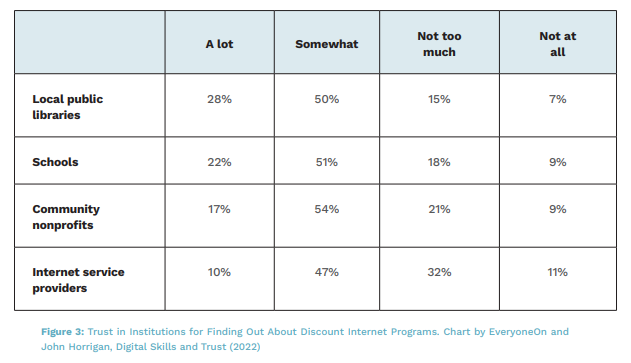
When the benefit was first introduced as the Emergency Broadband Benefit, it offered a $50 subsidy. In 2022, the program transitioned from the EBB to the ACP, and the subsidy was reduced to $30 on non-tribal lands. To offset the decrease in subsidy, the White House secured voluntary commitments from providers to offer services that are fully covered by the benefit. Despite addressing the benefit amount, consumers continue facing significant hurdles to enrolling in the program and ensuring that providers apply the benefit correctly.
Community organizations have stepped in to fill gaps, using trust built with residents who are eligible. For example, the City of Austin offers matching grants to community organizations to support local digital inclusion efforts. In the words of the City of Austin’s Program Manager for Community Technology:
“Technology raises the ceiling of what is possible, but it also raises the floor of what you need to be able to participate. The City’s programming is designed to kind of make sure that we’re not leaving anyone behind by advancing technology, while also making sure that folks are able to still access it.”
Through its Grant for Technology Opportunities Program (“GTOP”) that was established in 2001, the City of Austin helps sustain the ecosystem of local organizations working to improve digital outcomes for residents.
Coordination through regular Digital Empowerment Community of Austin (“DECA”) calls enables the quick dissemination of information about programs like ACP to the trusted community partners and the populations they serve. Additionally, the City has a dedicated team member to conduct community outreach activities to increase ACP enrollment and coordinate with other supporters and Travis County.
A great example of local coordination boosting ACP enrollment can be found in San Antonio. Digital Inclusion had been a priority of the City of San Antonio’s Office of Innovation since a 2019 study commissioned from the University of Texas San Antonio highlighted barriers including unaffordable Internet connections, difficulty using the Internet, unreliable connection speeds, a lack of devices or have obsolete devices to access the Internet; and concerns about safety and privacy while online.
In 2022, the Office of Innovation partnered with Bexar County and private and philanthropic funders to form SA Digital Connects, a public-private-community partnership established to create a roadmap to expand connectivity in San Antonio and across greater Bexar County. After identifying and interviewing over 140 organizations working to address various aspects of the digital divide, SA Digital Connects is working to coordinate sustainable, long-term solutions that harness collective resources and collaboration to bridge digital gaps.
Leveraging the nonprofit coordination capacity of SA Digital Connects and trust in the City of San Antonio local government, community outreach efforts beginning in May 2022 led to a substantial increase in new ACP enrollments: 6,414 and 5,047 in May and June respectively, up from 3,766 in April. Responding to the feedback of local partners, SA Digital Connects developed an ACP toolkit and enrollment guide to help community organizations assist with program applications.
The impacts of locally-led outreach and community coordination are well-documented. Often, these efforts are left underfunded or completely unfunded in the development of State and Federal programs. On August 8, 2022, the FCC established an Outreach Grant Program for the Affordable Connectivity Program (ACP). This $100 million outreach grant program will aim to provide funding to partner organizations to make sure that those who are eligible for the Affordable Connectivity Program hear about it.
The FCC released the Notice of Funding Opportunity for four outreach grant programs on November 10, 2022. The funding awards of these programs will be determined early next year. If successful, these grant programs could serve as a model that would be integrated into the initial planning of future government programs. Including outreach in program design, rather than as an afterthought can help maximize programmatic impact.
BUILDING ACCOUNTABILITY IN THE LONE STAR STATE
Building in the Lone Star State
Building community-centered infrastructure remains equally important to ensuring that everyone in the US has the tools they need to connect. Affordable Internet programs alone are not enough, particularly in their current iteration.
Like many communities across the US, local leaders in Harlingen, Texas, found that students were not equipped to learn from home when the pandemic suddenly pushed schoolwork online in March 2020. Based on the 2019 Census’ American Community Survey, more than 7,800 Harlingen households (over 34 percent of the 23,000 households in the city) did not have access to wireline broadband. As a result, the City developed a partnership with the Harlingen Consolidated Independent School District (HCISD), committed $4 million in CARES Act funding to fund a core network and has begun exploring wireless and fiber deployments to determine the best technology for their community.
Another example of communities working to bridge gaps through local infrastructure comes from Brownsville. The City engaged with residents via a community survey on how best to address gaps in connectivity and access. Because of this outreach, the Brownsville was positioned to use ARPA funding to build out middle-mile infrastructure in a way that benefited its residents. The City then contracted with BTX Fiber, who would lease the publicly-owned fiber and complete the connection to residences and businesses. Capitalizing on the new, affordable high-speed Internet availability, the City doubled down on its community engagement efforts by offering workforce development training and telehealth expansion.
The City of Pharr and local anchor institutions partnered to distribute a community survey to solicit resident input on addressing a staggering digital divide in the area. Informed by the survey responses, the City worked with partners to develop a municipal ISP that is providing fiber-to-the-home high-speed broadband. It is participating in the FCC’s Affordable Connectivity Program to provide affordable access to its residents, in addition to establishing affordable service tiers of $25/month for 500 Mbps symmetrical and $50/month for 1Gb symmetrical. Additionally, Pharr is investing in its youth by providing information technology workforce training to students who intern or apprentice at a helpdesk.
A pioneer community-driven infrastructure in Texas is Mont Belvieu’s MBLink. The City navigated problems similar to those faced by other rural areas throughout the country: large ISPs didn’t see a strong enough business case to expand their footprint, upgrade Internet speeds or offer any Internet service to certain residents. After overcoming the hurdles around issuing bonds and not having an electrical utility, beginning in June 2018 every residence in Mont Belvieu could sign up for the city’s Internet service, MBLink. Building on the public trust developed through years of transparent community conversations, feasibility studies, and court petitions, by the time the network was ready to go live, MBLink had already signed up nearly ⅓ of the city’s 7,500 households. The local data center and customer support staff have further bolstered trust in MBLink, and about half of the households were signed up by the end of 2019.
When community needs are able to drive locally-controlled Internet infrastructure investments, the networks can benefit from trustworthy relationships established between cities, counties, and anchor institution partners. In cases where schools and libraries step up to fill connectivity gaps in their communities, obstacles are reduced due to established trust in these anchors and residents’ familiarity with existing services. Notably, when a local government takes the lead, residents are able to trust the same people who already provide their water, sewer, or electricity to provide their Internet, leading to improved outcomes like those in Mont Belvieu.
With close physical and relational proximity to residents impacted by digital inequities, local governments and community organizations are building accountability into broadband programming. Meaningful dialogues with impacted community members combined with local leadership passionate about improving digital opportunities are transforming the way that residents understand the level of service available in their neighborhoods and have a seat at the table to improve it.
THE DEATH STAR LAW
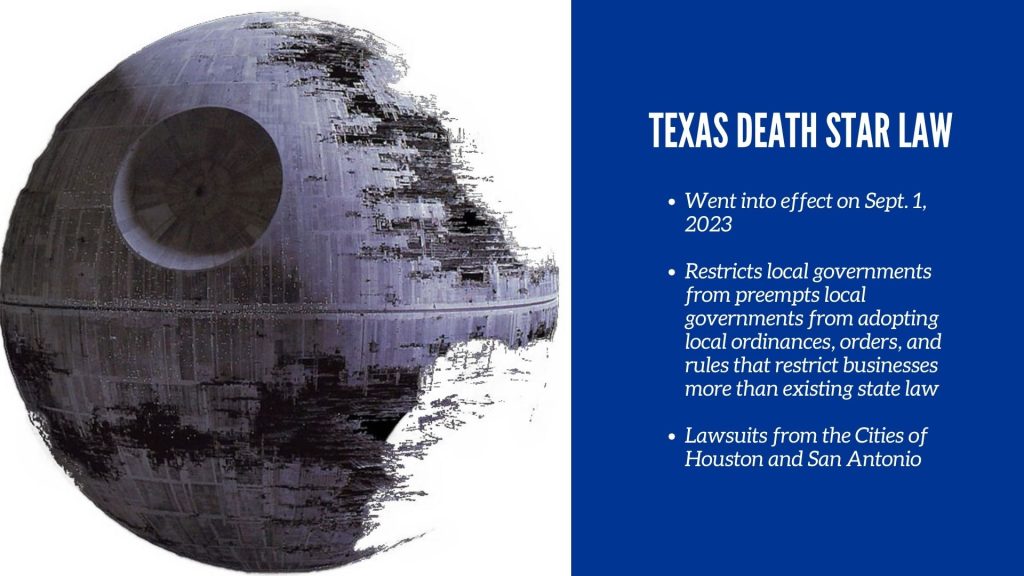
Signed in June 2023, a Texas law received considerable press coverage – in addition to lawsuits from the Cities of Houston and San Antonio. House Bill
2127, better known by its nickname the “Death Star” law, went into effect on
September 1, 2023. The legislation preempts local governments from adopting
local ordinances, orders, and rules that restrict businesses more than existing state law, further eroding local decision-making. As the lawsuits explain, the Texas constitution limits state preemption to cases where a direct conflict between state and local law exists, leaving open questions about the law’s constitutionality. In the interim, ambiguity about local authority could hinder city and county governments from maximizing broadband funding’s impact.
THE TEXAS BROADBAND OFFICE IS TAKING OWNERSHIP OF BROADBAND GAPS.
Just as local governments across Texas have implored innovative solutions to connect residents and businesses, State government agencies have similarly prioritized broadband policy. The Comptroller’s Office houses the Texas Broadband Development Office, which manages broadband grant and loan programs, conducts community engagement, and offers resources to help local governments and community leaders. While the Public Utilities Commission does not directly oversee broadband, their authority over electric utilities enables them to adjust state policy to improve broadband infrastructure. State agency leadership is critical to ensuring that federal policies address community needs, and provide additional channels of communication for local leaders to learn about broadband programs.
In May 2021, NCC published state-by-state information about broadband mapping across the U.S., and the State of Texas’s role has expanded in that relatively short time period. Federal maps are integral to broadband mapping in Texas because they often impact funding opportunities and determine which areas funding can support broadband projects.
Significant inaccuracies in federal broadband mapping led Congress to pass the Broadband DATA Act in 2020, which requires the FCC to update its existing mapping processes. Internet Service Providers submitted data for the revised, more granular mapping process by September 1, 2022. The FCC released it on November 18, 2022.
State and local government challenges to the underlying map of buildings that require a broadband connection are ongoing at the time of this publication. Importantly, those maps will determine how much funding Texas will receive for broadband funding from the Infrastructure Investments and Jobs Act, passed in November 2021. Each state will receive at least $100 million for the Broadband Equity, Access, and Deployment program, and the FCC’s calculation of unserved households in that state will determine additional allocations from the National Telecommunications and Information Administration.
In contrast to the small handful of state broadband efforts a decade ago, all 50 states across the US now have a broadband program of some type. Texas is one of the 34 states with a centralized broadband authority.
Passing House Bill 5 in June of 2021, the Texas legislature established the broadband development office under the Texas Comptroller of Public Accounts (Comptroller or CPA) to promote the expansion of broadband access across Texas. Placing the office under the Comptroller helps to insulate the office from the politics of the Governor’s office, guarantees a commitment to transparency and data-driven decisions, and leverages the technical expertise required to provide grants to localities.
In addition to the placement of the office, the robust community engagement that has been undertaken by the Texas Broadband Development Office provides a model for other states. Including 12 public town halls and 60 round tables across the state, BDO officials met with over 1,000 Texans and received over 16,000 survey responses. According to Glenn Hegar, Texas Comptroller of Public Accounts:
“More than 16,000 Texans have used our survey to share their broadband experiences. [The] sentiment has been consistent: slow data speeds, unreliable access, affordability and coordination are critical areas of concern for Texas families, businesses, educators and farmers. An important, recurring theme has been the reminder that though high-speed internet may once have been a luxury, it is now a necessity. Texans need reliable, high-speed connectivity for public health, safety, education and modern agriculture.”
A final aspect of the Texas Broadband Development Office worth replication and adaptation is the commitment to local partnerships. In addition to naming local coordination in their guiding principles, the creation of toolkits, and direct guidance for local leaders provide a level of support beyond what is seen in most states.
In April 2022, the Texas Public Utilities Commission adopted a rule that allows electricity providers to lease their excess fiber capacity to broadband providers in unserved and underserved parts of the state.
In a press release announcing the policy change, Governor Greg Abbott stated that: “Broadband is an essential tool for education, telemedicine, businesses, and more – which is why the State of Texas has prioritized closing the digital divide and ensuring internet access across the Lone Star State. The adoption of the first middle mile rule is an incredible achievement for Texas, and it will enhance our efforts to expand broadband access in underserved communities across the state.”
State middle-mile policies have played important roles in expanding infrastructure across the US. When Massachusetts planned its statewide middle-mile network, several local governments partnered with the state early on and used the infrastructure to improve local service offerings through partnerships. In January 2021, Kentucky became the first state to secure at least one local-service-friendly node for each of its 120 counties through its middle-mile network, KentuckyWired. Those same success stories could now find their way to broadband deserts in Texas by harnessing infrastructure owned by electric utilities.

Governor Greg Abbott
![“More than 16,000 Texans have used our survey to share their broadband experiences. [The] sentiment has been consistent: slow data speeds, unreliable access, affordability and coordination are critical areas of concern for Texas families, businesses, educators and farmers. An important, recurring theme has been the reminder that though high-speed Internet may once have been a luxury, it is now a necessity. Texans need reliable, high-speed connectivity for public health, safety, education and modern agriculture.” Glenn Hegar, Texas Comptroller of Public Accounts](https://149694168.v2.pressablecdn.com/wp-content/uploads/2023/09/Screenshot-2023-09-26-133000.png)
Glenn Hegar, Texas Comptroller of Public Accounts
Figure 4: The FCC’s updated Broadband Availability map shows that many parts of Texas still lack wired service offering speeds of 100/20 Mbps, the new target speed for federal funding programs. Oftentimes, local experiences differ from providers’ advertised service offerings. Explore the FCC’s map here.
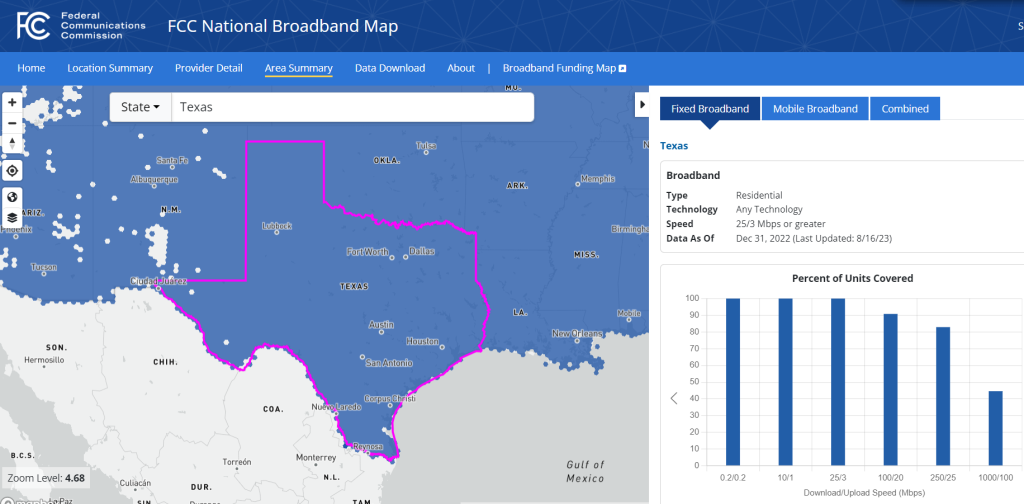

Figure 5: Broadband Mapping Timeline. The FCC’s broadband maps are used as the basis for funding allocations. Absent state and local efforts to improve these datasets, communities risk losing out on funding opportunities through $42.45 billion Broadband Equity, Access, and Deployment program.
Figure 6: Graphics like this one provided by the Texas Broadband Development Office help local leaders understand what funding sources may support programs in their communities.
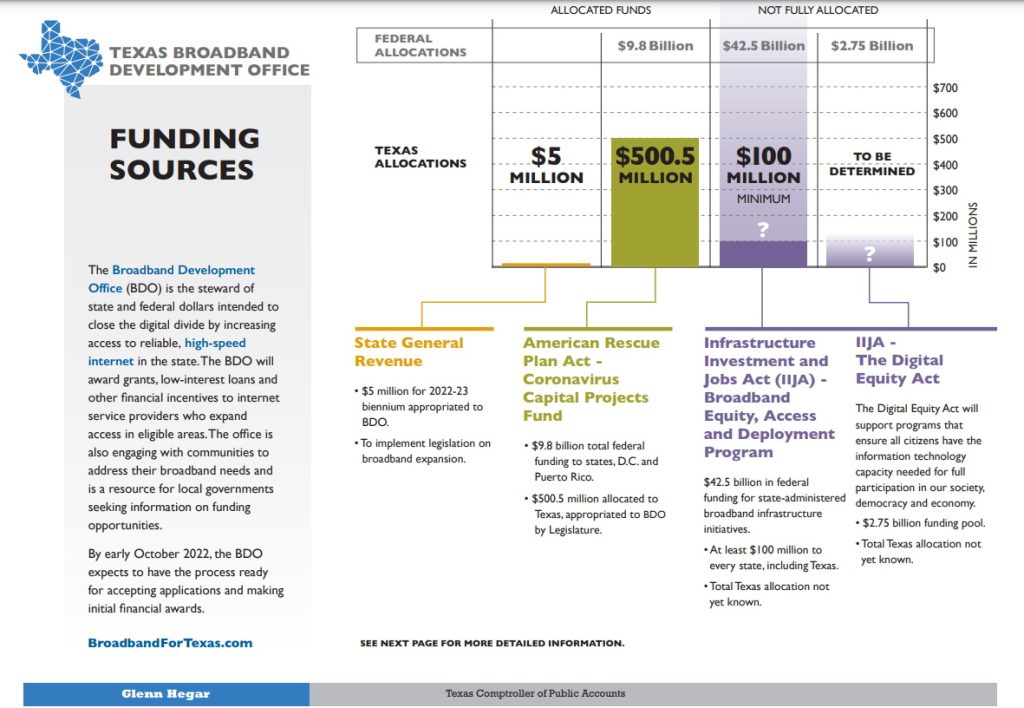
RECOMMENDATIONS
- Build flexibility into programs to enable local leaders to tailor solutions to residents’ needs. Further, clear guidance about what is and is not allowed helps communities ensure that their broadband plans do not compromise other funding opportunities.
- Develop comprehensive solutions that promote opportunities for residents to take part in federal programs. Funding directed toward broadband projects should also include funding for community engagement and collaborations with trusted community messengers.
- Prepare and support local efforts to hold grantees accountable for serving their communities as promised in the applicant’s federal grant applications. Local leaders devote countless resources to addressing residents’ concerns. Those concerns can provide insight into areas where federally funded initiatives have not accomplished stated goals. Increasing channels of communication between local and federal leaders can help ensure that federal funding provides the maximum impact.
- Expand local autonomy over broadband. Local leaders have built-in accountability and earned community trust. Franchise agreements are one area where local autonomy has been limited over the last two decades. Restoring that authority would benefit Texas residents who look to their local leaders for answers to questions about why broadband is not reaching their neighborhoods.
- Coordinate with local leaders on state and regional planning. Collaboration is needed long before programs launch. Ongoing workgroups also ensure that network infrastructure is frequently maintained and upgraded.
- Conduct listening sessions to capture feedback directly from residents. Also, record local broadband availability and adoption needs to highlight gaps in state and federal datasets.
- Develop partnerships with regional and state leaders to coordinate efforts to identify resources, develop knowledge efficiencies, and create sustainable and expandable broadband initiatives.
- Explore mission overlap areas to develop intersectional broadband initiatives.
- Identify barriers to broadband adoption. Oftentimes, they reveal opportunities to fill local needs in partnership with community-based organizations.
- Get involved in local broadband projects in your community. Volunteer-driven programs expand capacity and invite systemic change from other residents.
- Encourage local, nonprofit, and other community leaders to prioritize high-quality broadband for all residents and bring the pressing need for ubiquitous connectivity to the forefront of policy discussions.
CONCLUSION
As technology touches more aspects of our lives, the need for high-quality, reliable broadband will increase. Expanding networks will take partners at all levels of government collaborating with nonprofits, philanthropy, and the private sector. Trustworthy and transparent processes are necessary safeguards to ensure that an increase in broadband access and adoption brings meaningful benefits to communities across the U.S. Texas illustrates that all levels of government play a role in identifying community needs and developing programming that addresses the myriad of services broadband makes available. Its communities provide a model for municipalities and counties nationwide. They showcase the strides that local governments can make even when strapped by state broadband restrictions. State policies should improve local autonomy and invest in local solutions, reflecting the unique role that community initiatives play in bridging the digital divide for all Texans.
ACKNOWLEDGEMENTS
Special thanks to our Next Century Cities colleagues, Francella Ochillo, Brittany-Rae Gregory, Ryan Johnston, Roxanna Barboza, and Symone Campbell as well as local leaders across Texas who contributed their stories to this case study, including: Megan Morris (Tarrant County), Commissioner Adrian Garcia, Francis Nugent, and John Speirs (Harris County), Rondella Hawkins and Khotan Harmon (City of Austin), Minister Dominique Alexander (Next Generation Action Network), Marina Alderete Gavito (SA Digital Connects), and Jordana Barton-Garcia (Connect Humanity). Additional thanks to partner organizations including The Pew Charitable Trusts and the Benton Institute for Broadband and Society, whose research influenced this publication.
